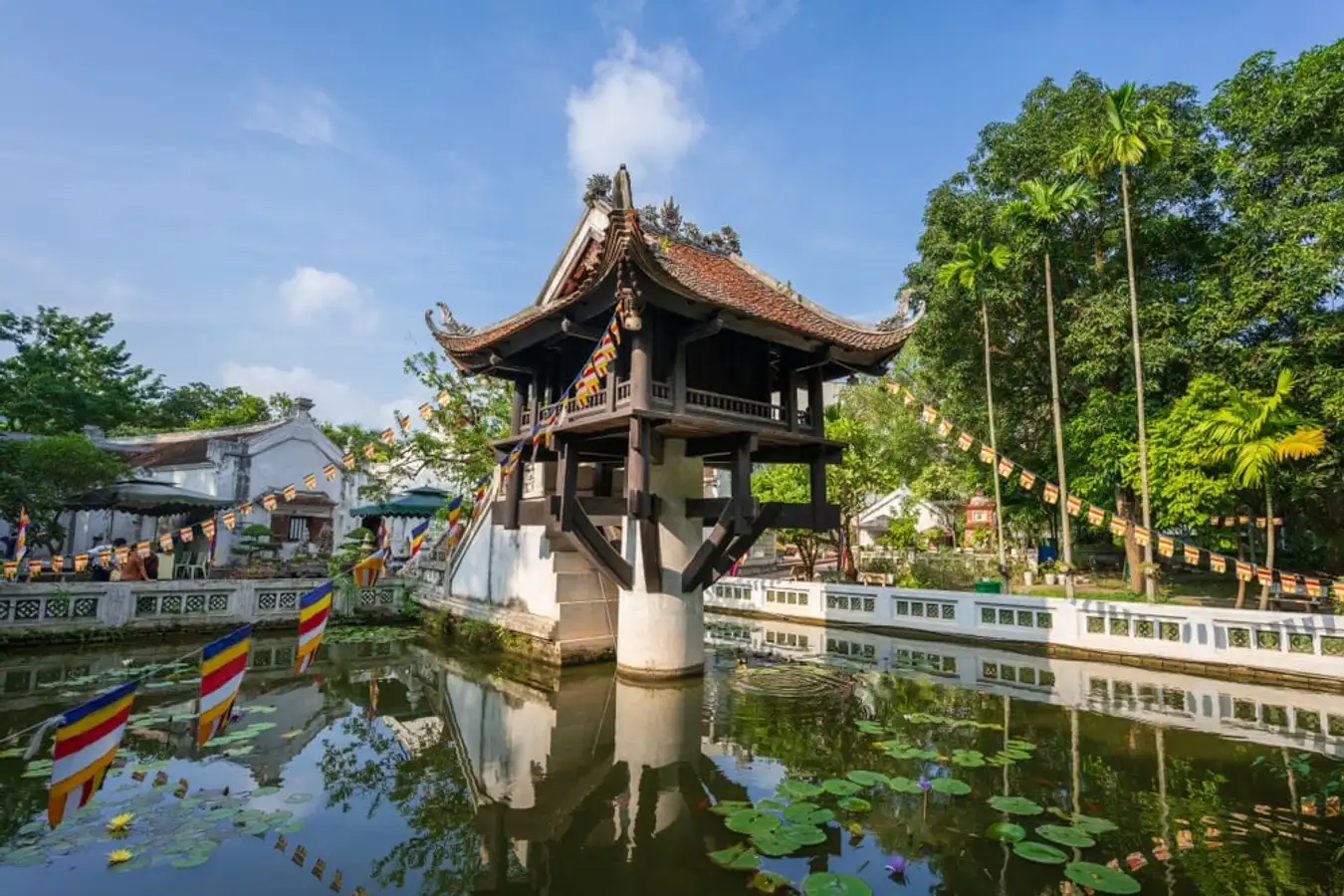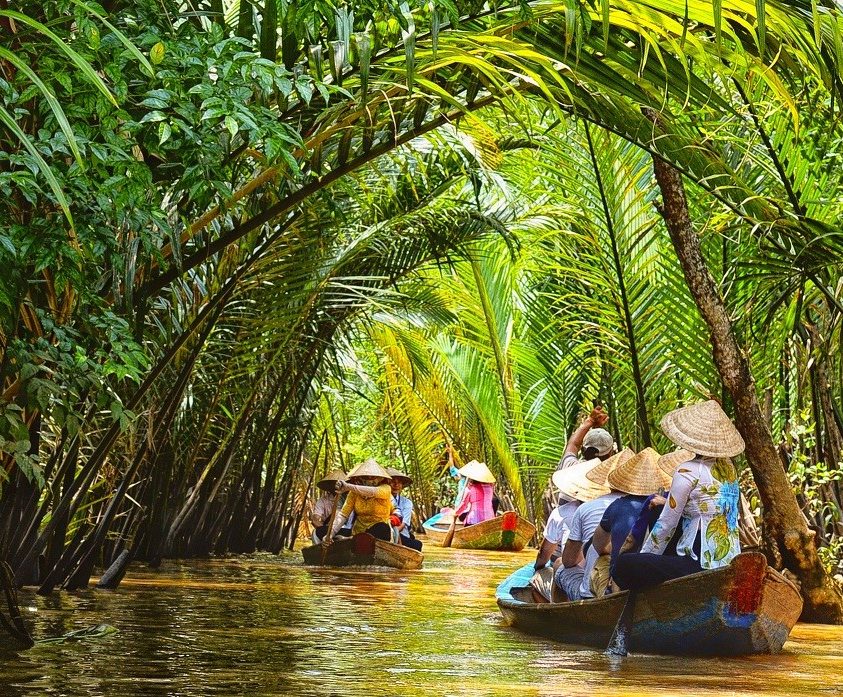Hoi An, Vietnam: Ultimate guide to attractions, weather, and travel tips
Hoi An has been recognized as one of the top seven travel destinations in the world for 2024 by the well-known American travel site Travel Off Path. This charming Vietnamese town is famous for its beautifully preserved Old Town and its unique blend of cultural influences, from Chinese to French. Always a must-see in Vietnam, Hoi An stands out for its timeless charm. So, what makes Hoi An so special? How can you truly enjoy your time in this fascinating town? Let’s dive into what makes Hoi An unforgettable, with insights straight from a local!
Where is Hoi An, Vietnam?
Hoi An is located in central Vietnam, about 45 minutes south of Da Nang, the capital of the region, and roughly a 3-hour drive north of Hue, the former imperial city.
This town is a harmonious blend of stunning natural elements. Just 3 km from the historic Old Town, you’ll find white sandy beaches and the clear blue waters of the East Sea. The city center, situated downstream of the Thu Bon River, is interlaced with winding canals, giving Hoi An a poetic and nature-filled ambiance.
Good to know:
Hoi An, once known as Faifo in French, was a bustling port city from the 15th to 19th centuries, attracting traders from around the globe dealing in ceramics, silk, and more. Today, Hoi An retains its traditional Asian charm and is a UNESCO World Heritage Site, celebrated for its rich history and stunning architecture.

How to Get to Hoi An
By Plane
The fastest way to get there is to fly from Ho Chi Minh City (Saigon) or Hanoi. You can fly to Da Nang, which is only 30 km away and takes about 50 minutes to drive. Hoi An doesn’t have its own airport. If you want to save money on your way from Da Nang Airport to Hoi An, you might want to rent a car. This can be set up by your hotel or tour agent.
By Train
There are many trains that go from Hanoi or Ho Chi Minh City to Da Nang. You can get to Hoi An by bus or cab from there. It takes 15 to 19 hours to get there by train, but it’s an interesting experience, especially if you choose an overnight cabin to save money on a hotel.
Even though it takes longer, the train lets you see more of Vietnam’s beautiful scenery, from rice fields and dragon fruit farms to mountains and the coast. The road from Ho Chi Minh City to Hoi An is famous for the beautiful scenery and dragon fruit farms.
For schedules and bookings, check the official website of the Vietnam Railways.

Things to do in Hoi An
Take a walk around the Old Town.
The Old Town of Hoi An is a hidden gem that covers just under 2 square kilometers. Its small, winding streets are lined with old homes and bright lanterns, making it a peaceful place to walk. Renting a bike is a great way to get around in this magical place where lanterns light up old homes and pagodas that are hundreds of years old.
Hoi An looks like a scene from a fairy tale at night. The streets are lit up with bright lights, making a magical atmosphere. Another must-do is to watch the sunset along the Hoai River. You can enjoy the beauty of the river by taking a boat ride or a walk along the bank.

Discover Hoi An's iconic ancient houses
As you walk through the Old Town, you’ll see the famous yellow houses of Hoi An, which are left over from the time when it was home to foreign merchants. You’ll also see Chinese communal houses and cultural hubs.
A lot of old houses are interesting to see, but Tan Ky House, a private home built in 1741 that’s full of valuable antiques and culture artifacts, is the best. Phung Hung, Quan Thang, and Duc An are some other important old houses that you should see. All of them are in the Old Town and give interesting glimpses into how people lived in Vietnam almost 200 years ago.
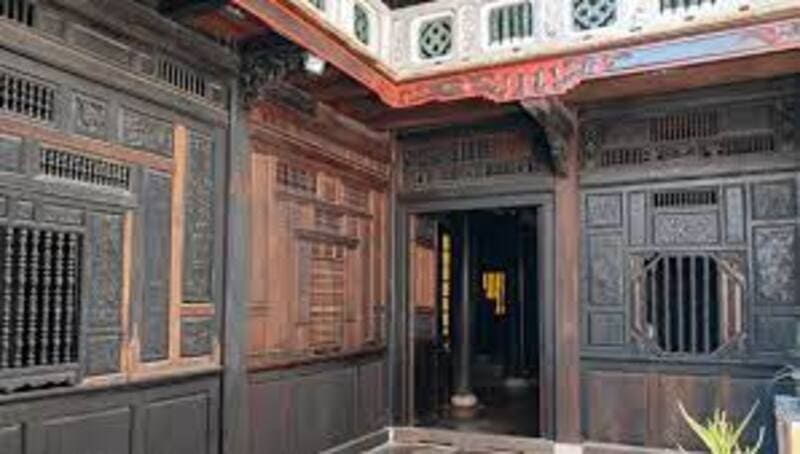
Visit Chua Cau – the iconic Japanese Bridge
The Japanese sailors built the Japanese Bridge, also known as Chua Cau, in the 1600s. People love this famous bridge because it has a unique design that combines Vietnamese, Japanese, and Chinese styles. It is made of stone and wood and spans a branch of the Thu Bon River. The roof is lacquered and has many elaborate carvings.
Fun fact: the bridge is shown on the back of Vietnam’s 20,000 VND bill, which shows how important it is to the country’s culture.
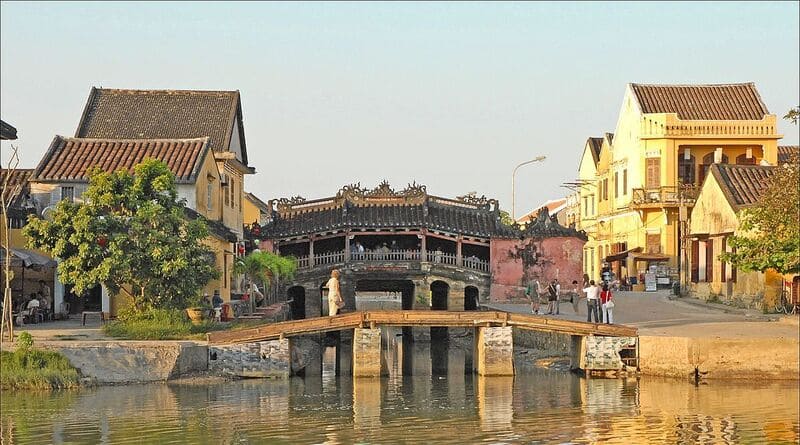
Visit Hoi An’s museums
Hoi An’s museums are set in traditional houses, preserving and showcasing artifacts and documents that reflect the town’s cultural and historical development.
The museum system includes six themed locations:
- Hoi An Museum (10B Tran Hung Dao Street)
- Sa Huynh Culture Museum (149 Tran Phu Street)
- Museum of Ceramics (80 Tran Phu Street)
- Museum of Folklore (33 Nguyen Thai Hoc Street)
- Cao Hong Lanh Memorial House (129 Tran Phu Street)
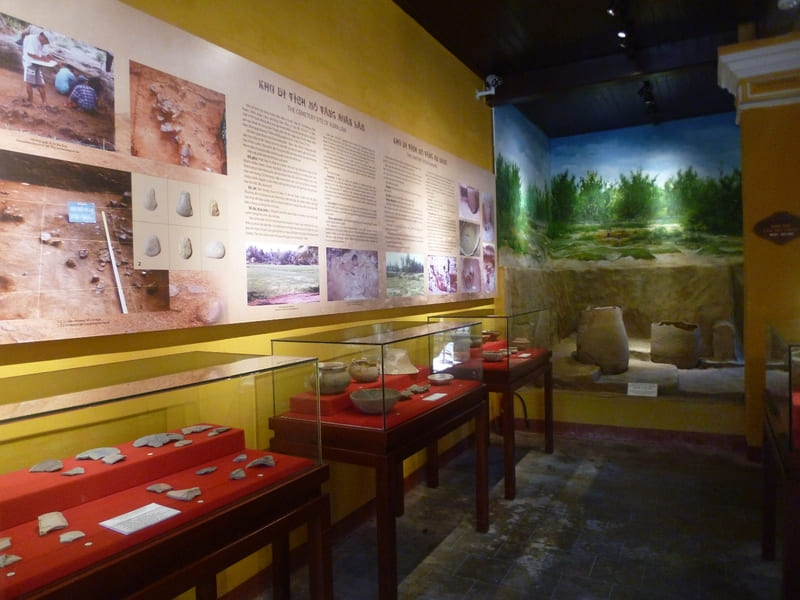
Relax on beautiful beaches
Beautiful beaches are another thing that Hoi An is known for. Tripadvisor named An Bang Beach as the fifth most beautiful beach in Asia in 2024. It’s only a 25-minute bike ride from town to get there. During the dry season, which lasts from February to September, the beaches are great for resting and doing water sports.

Visit traditional craft villages
You can visit nearby craft towns that focus on traditional arts and farming by taking a short bike ride. For pottery, go to Thanh Ha. For organic herbs and veggies, go to Tra Que. For making lanterns, go to Cam Chau. These beautiful towns are only 5 km from Old Town and give you a taste of life in the country.
If you like gardening, you should go to Tra Que Village. There you can learn about organic farming, help plant and pick crops, and even use fresh herbs to make a traditional Vietnamese meal.
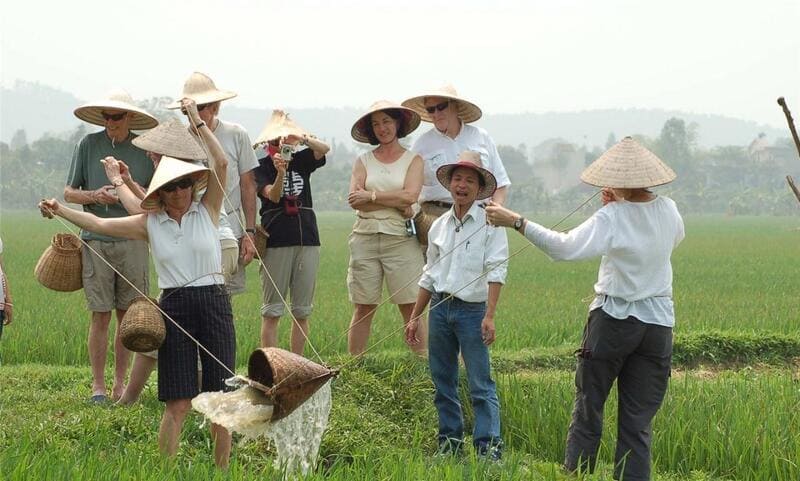
Visit the Cham Islands for a day
The Cham Islands (Cu Lao Cham) are a must-see for beach lovers. This group of eight small islands is part of a UNESCO-designated nature reserve and is 20 km from the coast of Hoi An.
You can enjoy beautiful beaches, swimming, and learning how to make traditional hammocks.

Enjoy the delicious food in Hoi An
The food in Hoi An is a big reason to go there. Cao lau noodles are a famous dish in Hoi An that are made with items that can only be found there. If you go to Hoi An, you should try the popular herbal tea MOT, which is served with fresh lotus petals and bamboo straws.

Join a local cooking class
Take a cooking class in Hoi An to learn about the food culture there. You’ll often get to pick out fresh ingredients at local farms and markets as part of these lessons. With the help of a cook, you’ll make and eat traditional Vietnamese food, which will give you a better understanding of how people live there.

Watch the Hoi An Memories Show
The Hoi An Memories Show is a world-class outdoor show that tells the story of the town over four hundred years. It’s a show that brings Hoi An’s past to life with 500 actors, traditional sets, and water stages.

Bay Mau Coconut Forest by basket boat
Just 10 minutes from the Old Town, Bay Mau Coconut Forest offers a unique experience of riding in traditional basket boats. Discover the serene beauty of the coconut trees and local wildlife as you learn about the area’s history and culture.
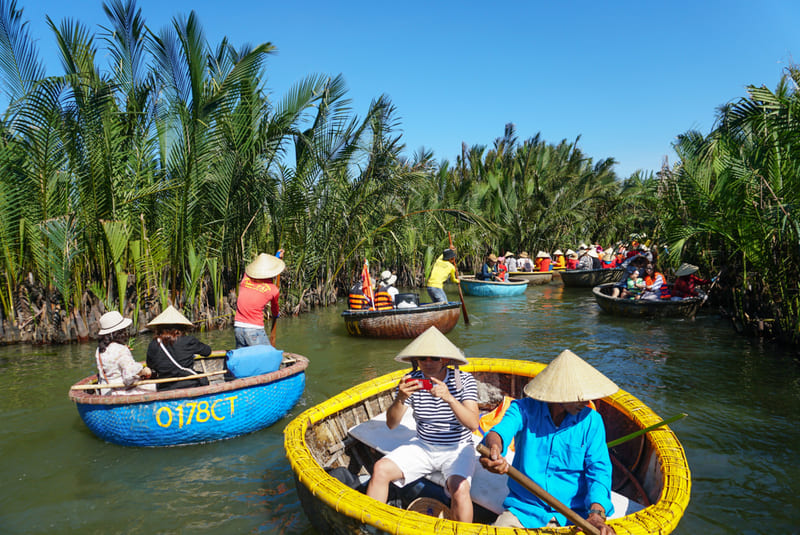
Get custom-made clothes
Many places in Hoi An’s Old Town offer quick and cheap custom-made clothing. The city is famous for its tailoring services. Pick out the fabrics and patterns you want, and when you’re done, you’ll have a perfectly made outfit to remember your trip by.

Best Times to visit Hoi An
In terms of weather, Hoi An has the same tropical monsoon climate as Vietnam’s Central Coast: warm, muggy, heavy rain, and lots of sunshine. In Hoi An, the weather is split into two separate seasons:
Dry Season (January to July)
The weather is nice and cool during the dry season, which lasts from January to early March. It gets warmer from the middle of March to July. Visitors should avoid going on April 30th and May 1st, which are major national holidays in Vietnam (Reunification Day). These days see a lot of domestic travel, which makes tourist spots busier than normal.

Rainy Season (August to December)
The rainy season changes every year, but November usually has a lot of rain and sometimes floods. But this only lasts a few days most of the time, not a whole month. During the flood season, Hoi An takes on a unique charm, with its streets transforming into canals. Instead of scooters or bicycles, locals and visitors use boats to navigate the town!
During the Full Moon Festival
Every 14th day of the lunar month, the old town is closed to cars and filled with traditional games, music, and the beautiful drop of lanterns into the river. It’s an amazing chance to learn about the local customs and meet the friendly people who live there.
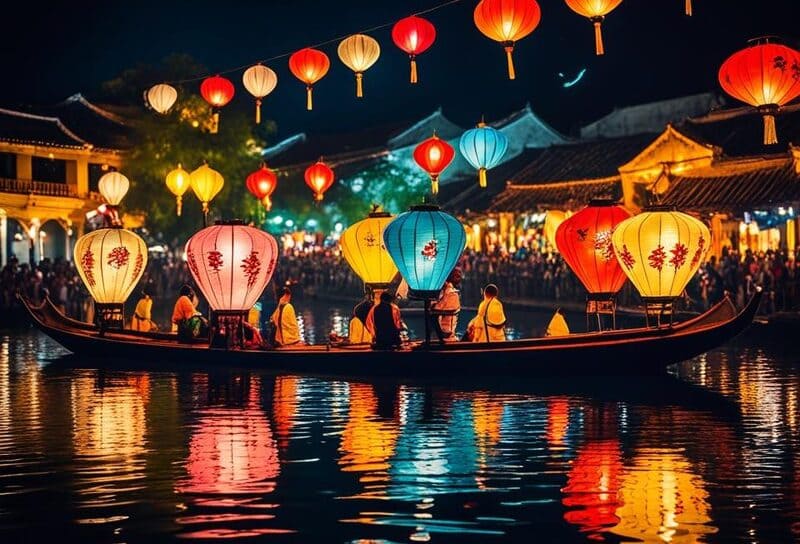
Good to Know:
Hoi An is just a 45-minute drive from Da Nang, famous for its stunning beaches and water sports. About 3 hours away lies Hue, the former imperial city known for its palaces and royal tombs. Combining these destinations is a great way to make the most of your trip to Central Vietnam.
What to Buy in Hoi An: Traditional Items
Custom-Made Ao Dai
A tailor-made Ao Dai (Vietnamese traditional dress) is a must-have for people who love fashion. Tailors in Hoi An are known for their skill, they combine old and new styles to make beautiful clothes that fit perfectly. Getting your Ao Dai made here is more than just shopping, it’s a cultural experience you’ll never forget.

Silk Lanterns
The famous silk lanterns of Hoi An make lovely, light gifts. These lanterns are made by hand with bamboo frames and bright silk fabrics. They come in many shapes and sizes and would look great in any home.

Conical Hats (Nón Lá)
The Nón Lá is a very important symbol of Vietnam because it stands for traditional elegance and simplicity. These hats are light, easy to pack, and great for both everyday use and home art. They are often decorated with beautiful patterns in Hoi An.
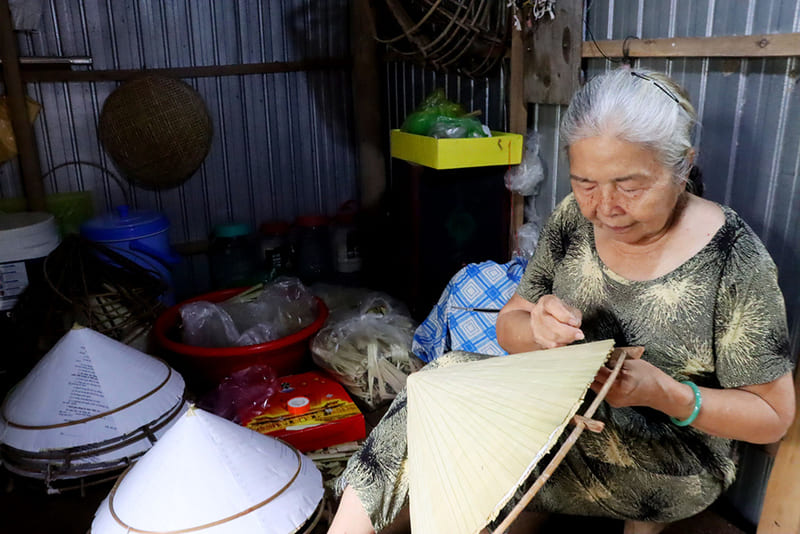
Calligraphy Art
Calligraphy in Hoi An is more than an art—it’s a heartfelt tradition. Visitors can request personalized calligraphy from local scholars, often featuring wishes for happiness, luck, and prosperity. Each piece is a meaningful keepsake filled with cultural significance.

Make sure to explore the town’s bustling markets and artisan shops to discover these treasures and take a piece of Hoi An’s heritage home with you!
Learn more

Thanh Nam Nguyen
Born in Ho Chi Minh City with Vietnamese-American roots, Thanh Nam Nguyen is passionate about adventures and traveling in Indochina. As a local guide for All Vietnam Senses, he leads tours in southern Vietnam, Cambodia, and Thailand, sharing his knowledge with travelers and inspiring readers to explore the region. Leave a comment below for him to respond directly!

